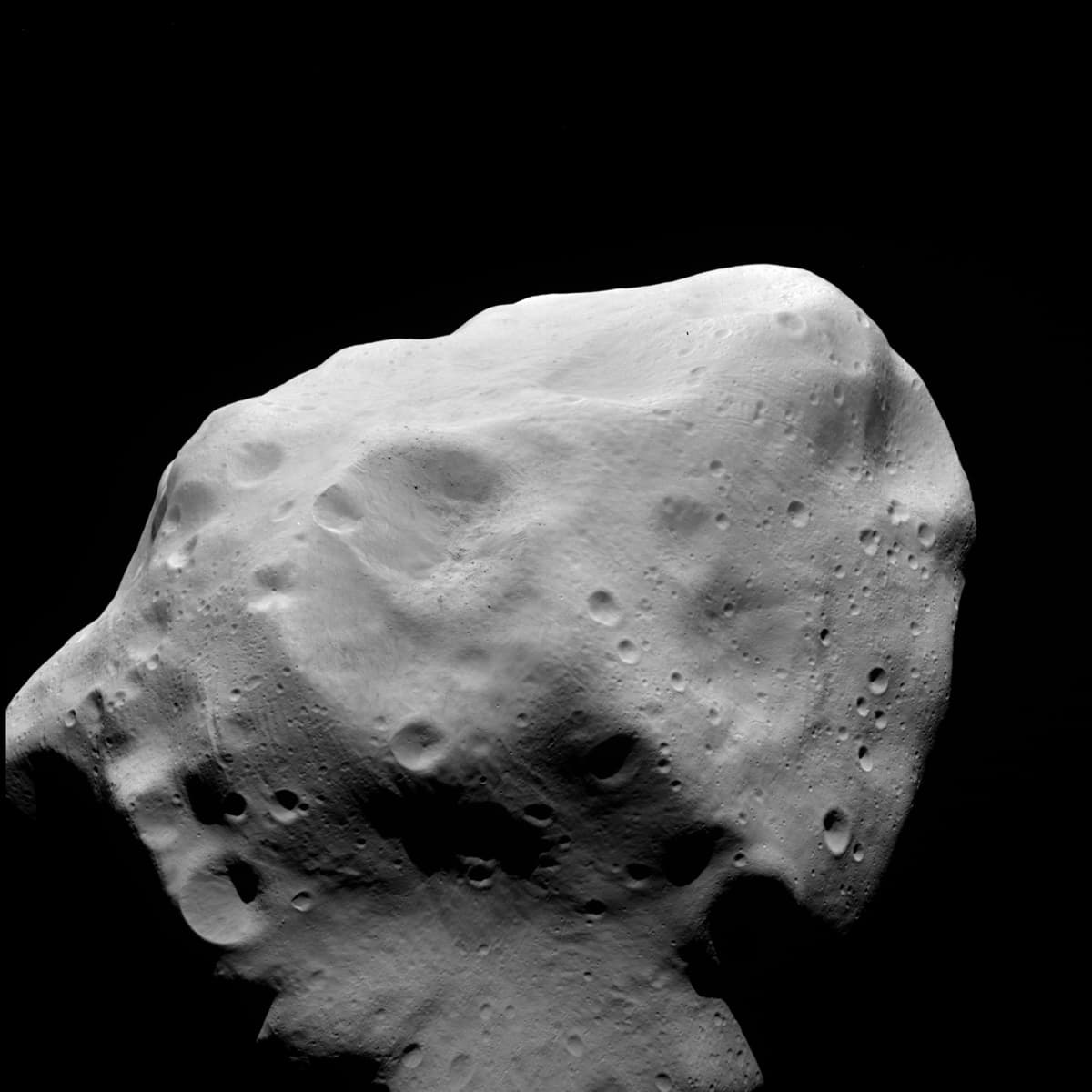What does it actually look like in the asteroid belt? Is it anything like as dense as is shown in films? Or is it more like you can see one or two rocks in the distance?
Matthew, Amsterdam
Contrary to popular belief, the asteroid belt is mostly empty and it’s not the crammed zone of potato shaped rocks seen in films and comics. But let’s quantify the distance between objects. To do so we need to start with the volume and the mass of the Asteroid Belt.
The belt lies between 2.06 and 3.27 AU (Astronomical Units -> 1AU is the Sun-Earth distance or 150 million km); those values depend on the resonance of those orbits with the Jupiter gravitational potential which makes them unstable. The maximum inclination of the plane of the orbit of some asteroids and the ecliptic is less than 20°.
We can calculate the dimension of the belt using the formula for the volume of a torus. We find that the volume of the belt is about 5×1025 km3.
The combined mass of all the materials in that volume is between 2.8×1021 to 3.2×1021 kg [1]. If it was equally distributed would mean less than 0.1 grams of material per km3.
The most common type of asteroid are carbonaceous asteroids, making up for 75% of the total population. The study of asteroid density is still limited to a small number of objects [2], so let’s oversimplify this problem and assume a density of 2 g/cm3.
Over 200 asteroids are known to be larger than 100 km,[3] and a survey in the infrared wavelengths has shown that the asteroid belt has 0.7–1.7 million asteroids with a diameter of 1 km or more[4]. Let us assume that all the asteroids have the same radius 10km and they are perfectly spherical with the same density. Under those conditions the average distance between objects is over 550000 km. If you were the Little Prince, looking for other asteroids, the closest to you would have an apparent size equivalent to the thickness of a hair held at arm’s length.
The situation is different for planetary rings. Under similar assumptions (albeit smaller and less dense objects) the average distance between the components of the Saturn rings is estimated to be tens of meters. Their proximity gives support to the hypothesis of material clumping across the rings.
REFERENCES
[1] – Pitjeva, E. V. (2005). “High-Precision Ephemerides of Planets—EPM and Determination of Some Astronomical Constants”. Solar System Research 39(3): 176
[2] Britt, D.T., Yeomans, D., Housen, K., Consolmagno, G., 2002. Asteroid density
[3] Yeomans, D. K. (April 26, 2007). “JPL Small-Body Database Search Engine”. NASA JPL. Retrieved 2007-04-26. – search for asteroids in the main belt regions with a diameter >100.
[4] Tedesco, E. F., and Desert, F. X. (2002). “The Infrared Space Observatory Deep Asteroid Search”. The Astronomical Journal 123 (4): 2070–2082.

